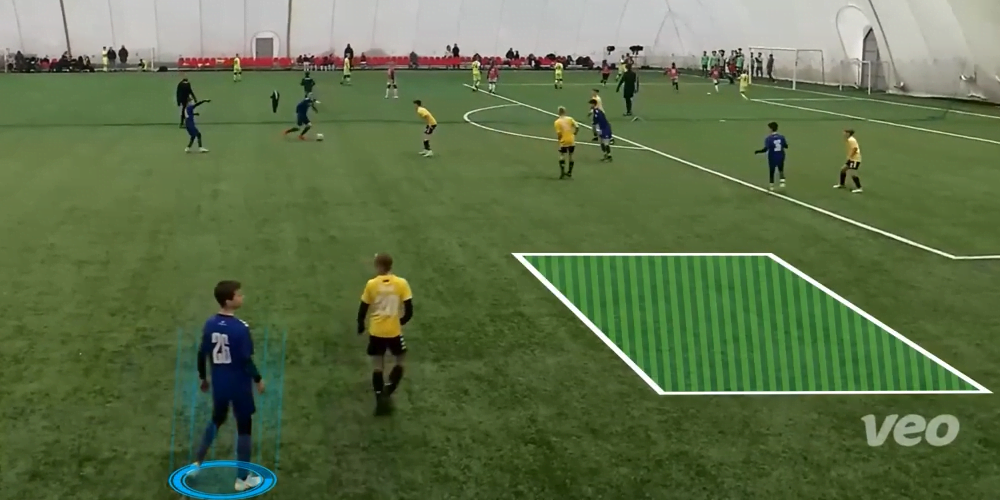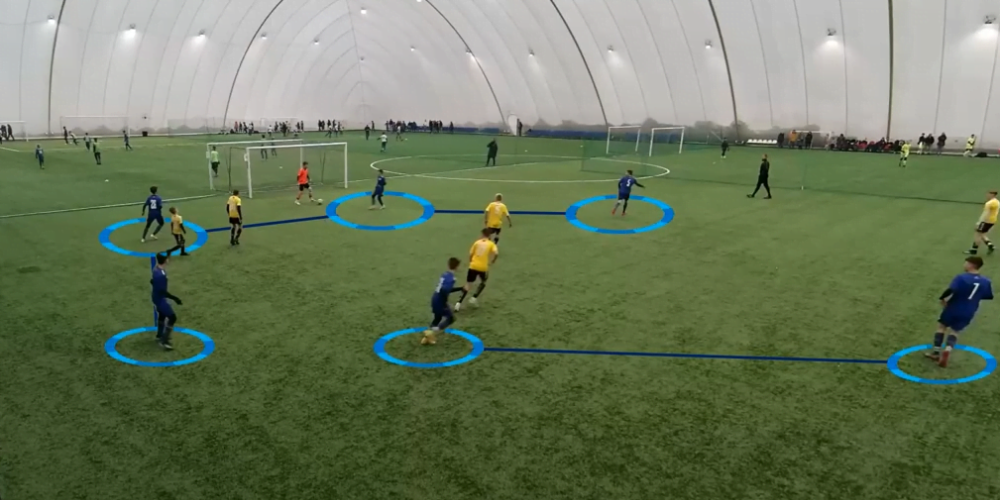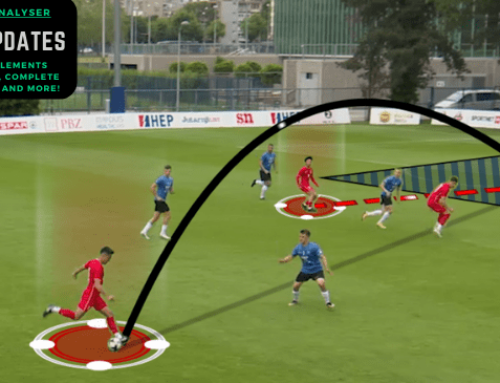Ever since its inception in the early 90-s, video analysis has become an increasingly popular tool in the world of sports. It offers a range of benefits for the development of young athletes. With technological progress, it has become easier to record, analyze, and share videos, making video analysis more accessible to everyone. While video analysis can help professional and young athletes to develop their skills and improve their overall performance, it also comes with its own set of challenges and limitations. In this blog, we will explore the benefits, challenges, and effective implementation of video analysis for young athletes in sports.
THE BENEFITS OF VIDEO ANALYSIS FOR YOUNG ATHLETES
Self-awareness
Video analysis can help in development of young athletes to gain a better understanding of their strengths and weaknesses. They can identify the areas where they need to improve and work on specific skills to increase performance. For example, by reviewing the footage of their game practice, young basketball players can notice that they either dribble with their head down, or tend to shoot three points without fully settling their feet. After identifying these areas for improvement, they can work on specific drills to correct them.
Better understanding of technique and tactics
By studying body language and positioning during the game, young athletes can identify areas for improvement. For example, a young football player notices that he holds the ball for too long, and that allows the opponents to successfully defend against him. Their coaches can create targeted practices for passing the ball more quickly and effectively. This can increase their understanding of the game and overall decision making.

Opportunity for self-reflection and improvement
Young athletes can use video analysis to gain a better understanding of their strengths and weaknesses. They can identify areas which need improvement, as well as the areas in which they thrive. By regularly using video analysis, young athletes can recognize and leverage their strengths, and they can continue to improve and grow as athletes.
Improved communication with coaches and teammates
Video analysis enables young athletes to communicate more effectively and openly with their coaches and teammates. They can share their videos and discuss their performance, strategies, and techniques. This communication builds up teamwork, and promotes a positive team culture.
There are even more benefits of video analysis for young athletes, like: Injury prevention, motivation, enhanced focus, improved confidence. Video Analysis can help younger athletes to reduce the risk of injury and stay healthy. By seeing their progress over time, it can help them to keep and improve focus on important areas during the training and the match. By reviewing their performance and identifying areas of strength, young athletes can develop a greater sense of confidence in their abilities. Overall, video analysis is a valuable tool for young athletes to improve their performance, and achieve their goals.
CHALLENGES AND LIMITATIONS OF VIDEO ANALYSIS FOR YOUNG ATHLETES
While video analysis can be a powerful tool for the development of young athletes, it also comes with some challenges and limitations. Let’s take a look at some of the potential drawbacks:
Potential for negative effects on confidence
While analyzing their matches and training sessions, young athletes may become overly self-critical and discouraged by their mistakes. That can negatively affect their performance, self-esteem, and confidence.
Over-reliance on technology
Despite being a valuable tool, video analysis should not replace traditional coaching methods. Over-reliance on technology can lead to a lack of interaction between coaches and athletes, which can also negatively affect their performance.
Time-consuming process
As many coaches and analysts already know, it is a time consuming process, not only for the coaches and analysts, but also for the young athletes. This can be challenging for the athletes that have other commitments, such as school or some extracurricular activities.
Potential for misinterpretation of data
While analyzing the data, coaches and athletes need to be careful. Misinterpretation of the data could lead to incorrect conclusions, poor decision making, and decline in performance. It is better to avoid using video analysis, than to use it incorrectly.
It is important for coaches, analysts and athletes to understand all of these challenges and limitations, and how to take steps to minimize mistakes. Video analysis is a powerful tool in itself, but in the right hands that know how to avoid the obstacles of video analysis, it becomes part of the formula for creating successful and happy young athletes.
Video analysis should be used in addition to traditional coaching methods, and should be implemented in a way that does not negatively affect athlete’s confidence and performance. Proper use of video analysis can provide valuable feedback,and can help improve performance of the athletes to help them achieve their goals.
HOW TO IMPLEMENT VIDEO ANALYSIS EFFECTIVELY FOR YOUNG ATHLETES
To effectively implement video analysis for young athletes, coaches and analysts should consider the following:
Provide constructive feedback
Coaches should provide constructive feedback that is focused on improvement rather than criticism. This feedback should be specific, measurable, and actionable. Coaches should also recognize and reinforce positive behaviors to encourage athletes to continue to improve.
Encourage collaboration and communication
Video analysis should be used as a tool to promote communication between coaches and athletes. Some athletes are not comfortable to talk about their mistakes in front of their teammates, and they should be encouraged to communicate and share their videos, which can open more discussion. Accepting criticism as well as positive feedback in yearly age of development, can have significant impact on improvement of young athletes.
Use video analysis as a supplement to traditional coaching methods
Video analysis should be used as a supplement to traditional coaching methods, not as a replacement. Coaches should continue to provide hands-on coaching and guidance to athletes, and video analysis should be used to supplement and enhance the coaching process.
Choose the right technology
In today’s modern world, with many tools available online, it’s important to choose the one that fits your needs. The software should be user-friendly, has to provide accurate data, and has to be relevant to your sport and your training objectives. One example of software that is tailored to meet the specific needs of coaches and their coaching process is Once Video Analyser.

Incorporate video analysis into regular training sessions
Video analysis should be incorporated into regular training sessions to maximize its effectiveness. Athletes should have regular opportunities to watch and analyze their performance, and coaches should use this information to adjust their training plans and provide targeted feedback.
Create a supportive environment
Video analysis can be a powerful tool for improvement, but it can also be intimidating for young athletes. Coaches should create a supportive environment so that athletes feel comfortable sharing their videos and receiving feedback. This can include providing positive reinforcement, creating a safe space for open communication, and focusing on the athlete’s long-term development.
Track progress
Coaches and athletes should keep track of performance, and use this information to adjust training plans and set new goals. This can help athletes stay motivated, focused on their development, which results in increased confidence and overall performance of the athletes.
CONCLUSION
Video analysis can help in development of young athletes in numerous ways like: improved communication and confidence, better understanding of the tactics, improved technique, injury prevention etc. However, video analysis can also have negative effects like: over-reliance on technology, misinterpretation of data, negative effects on confidence etc… It is important to implement video analysis effectively.
Coaches, analysts and athletes can do that by setting clear goals and objectives, providing constructive feedback, encouraging communication and using video analysis as a supplement to traditional coaching methods. They can also track progress, incorporate video analysis into training sessions etc… Overall, if used correctly, video analysis can be a valuable tool for young athletes to improve their performance and achieve their goals!
Haven’t tried video analysis yet, or you aren’t satisfied with your results? Visit www.once.de and download a free trial of Once Video Analyser PRO! Once is a simple-to-use tool for professional video analysis with TV-like graphics. You can get a walkthrough video call free of charge as well. Simply contact us at [email protected] to schedule a free call, so we can show you all the program features, and answer any questions you may have.
You can check more details about our products:
Once Pro, Once Basic and Once Telestrator, or click on our homepage www.once.de.
If you want to try Once Video Analyser PRO for free, click on the button below!






